Type
 Single Ply
双工
Triplex
Single Ply
双工
Triplex
Stock
Print Process
Coating
Quantity
Corners
打样Method
Time Frame
Free Shipping!
Our Semi Gloss coating is one of the most popular and versatile options available. It adds shine to make the colors in your design stand out, ideal for photographs or vibrant patterns on your Business Cards. More subtle than Super Gloss, and more vibrant than Matte, Semi Gloss is the perfect balance of the two, offering the best of both worlds.
Are you looking to add something extra to your business cards? Look no further than our sticker business cards. As the name suggests, this two-in-one product is both a business card and sticker with one side displaying your contact details (like your average business card) and the other having an easy-to-peel sticker. You’ll be right on-trend when handing your potential clients your business card by not only ensuring that they get all of your contact info but also giving them some free sticker swag. Both unique and versatile, this addition to our product range will provide the receiver something to talk about.
The Colorplan Paper Collection features a diverse range of beautiful colored stocks ready to speak to any mood, style or message. Beyond its undeniable aesthetic qualities, the Colorplan Paper Collection boasts a flawless smooth surface and natural uncoated feel.
Set yourself apart from the standard rectangular card with a die-cut shaped business card! Guaranteed to make your branding stand out, we have a wide variety of pre-made shapes for you to choose from. Ranging from rounded corners to classic tickets, bite marks to bubbles, we have something to boost your brand.
Discover the exquisite qualities of 16pt Vibrant Gray, the smoothest of all our elegant Premium Gray stocks. The 18pt Cool Gray offers a more individual tone and more papery texture, while 18pt Dark Gray boasts a gorgeous shadowy shade with a natural feel. Our 20pt Gray Pulp is made from 90% recycled content and possesses the same unique texture of our other Pulp stocks but in a beautiful gray colour.
Do you need a promotional product that is designed to stand out? With five different options to choose from our mini brochures are a perfect option if you are looking for something compact while maintaining a cute, contemporary look that will stand out to your client. As one of our more versatile options we think these are perfect for businesses like photography studios, bakeries, florists, and believe they are excellent options for rate cards and special announcements.
Whether you want to bind your product catalogs or informative booklets, we provide our customers with perfect bound books. Unlike traditional saddle stitched method of binding, the perfect bound method is unique, stylish and gives your books a cleaner finish. With this versatile service, you can not only create catalogs and booklets but also storybooks, yearly diaries, and notebooks, which can be used in-store, at events and trade shows.
Home/Business Cards/ Embossed Business Cards
Elevate your business cards with custom embossing! The raised design adds sophistication and catches the eye through its impactful texture.
Elevate your business cards with custom embossing! The raised design adds sophistication and catches the eye through its impactful texture.
Elevate your professional persona with the refined elegance of embossed business cards. These cards captivate with a raised design that adds texture and depth. The uniqueness lies in the tactile experience; they engage the holder, leaving an enduring impression. At Jukebox, we believe that your business card is a reflection of your brand. Our artisans handcraft each card with precision, ensuring unmatched quality. With Jukebox, you get more than just a business card; you get a statement of excellence that sets you apart. Opt for Jukebox’s embossed business cards for unforgettable introductions.
Contact our customer service team for any questions you have.
We can emboss a wide range of stocks and materials. The best stocks for embossing are soft uncoated stocks (such as our 20pt Cotton) or for fine detail embossing, uncoated stocks 16pt or less.
If there is a specific stock you are interested in embossing, please request aPrint Quoteand one of our Estimators will get in touch with you.
Below are examples of materials we have embossed:
 |
Pearl 16pt Pearl Silver |
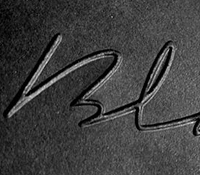 |
Premium Black 16pt Jet Black |
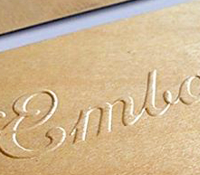 |
Wood Natural Birch |
 |
Spot UV 16pt Smooth Matte Laminate with Spot UV |
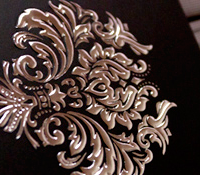 |
Foil 16pt Smooth Matte Laminate |
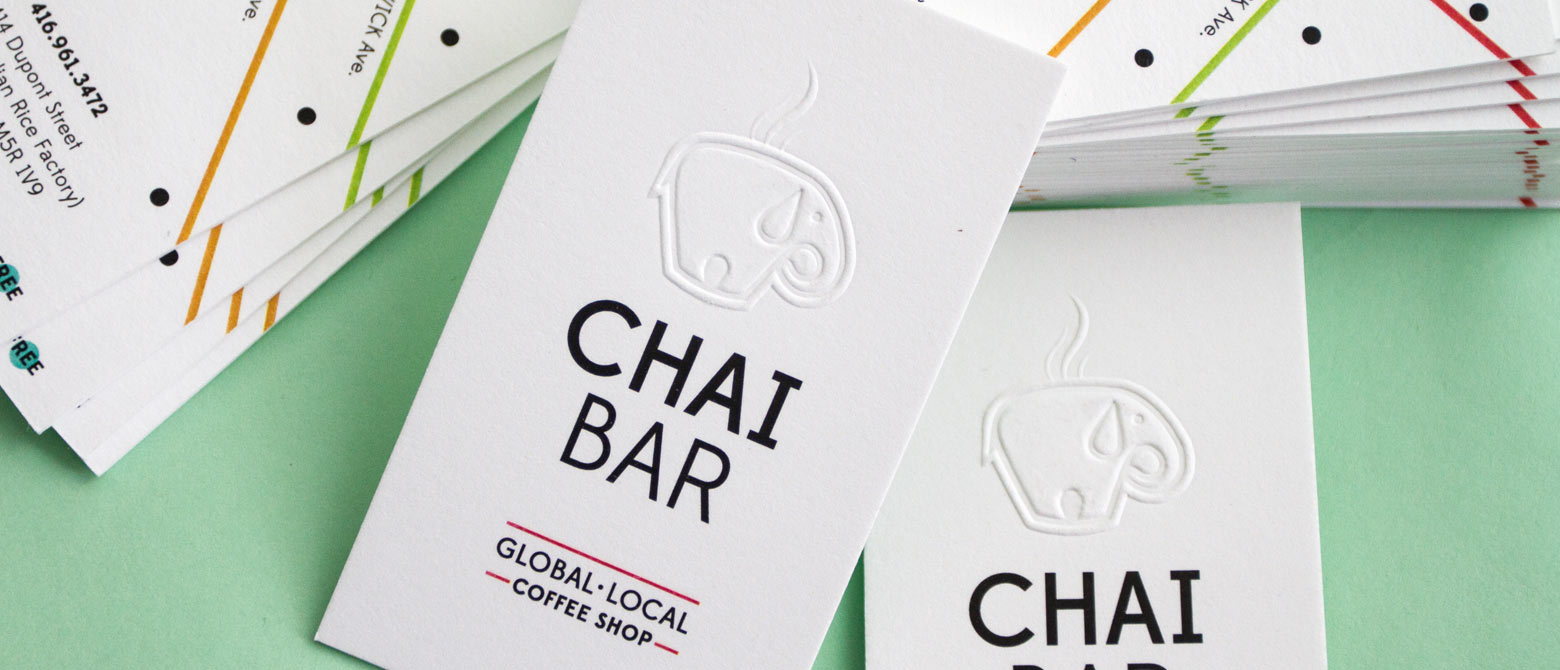
Thinner and softer stocks show the detail of an emboss and deboss much better than thicker, rigid stocks. Uncoated stocks also generally hold these details better.
That being said, greater depth of the raised area or impression can be produced with thicker soft stocks, like our 40pt Cotton. Since the thickness will make fine details less visible, designs for emboss and deboss should be more simple, bold and have no fine detail.
Thicker coated stocks will not be as suitable for fine detail or deep impressions, therefore the design for these stocks should be created with this in mind.
The impression of an emboss and deboss will show through on the reverse side. This means that any printed content that is directly behind the emboss or deboss will be affected. To avoid this, we recommend a duplex product where two stocks are mounted together. The side to be embossed or debossed will be produced first and then mounted to the second sheet to hide the impression. Note that a duplex product with emboss will reduce the quality of the impression due to the mounting process, so it is best to work around the emboss and go with a single ply product.
Please note that there are strict design considerations for these projects that one of our Print Specialists or Prepress agents will need to review with you first. You can speak to one by contacting 1.888.667.0067 - selection 4 or 5.
See:What are your paper options for duplex (2-ply) business cards?
Emboss print-ready files should be supplied as separations. Before you create a press-ready file for your design, be sure to carefully read through压花设计注意事项.
This means the emboss layer is supplied in a separate file (or separate page) of your press-ready PDF file.
Embossing is a popular printing technique that creates a raised design or image on paper. This effect is achieved by pressing the paper against a die that is etched with the design, which creates a three-dimensional effect.
However, the level of detail that can be achieved through embossing depends heavily on the type of paper stock being used. Thinner uncoated paper stocks are ideal for holding fine detail, while thicker rigid or coated paper stocks do not hold fine detail as well. At Jukebox, we offer a wide range of paper stocks, each of which may affect the way your embossed detail turns out.
If you are considering an embossed order, we do not recommend placing a "run-as-is" order unless it is a repeat order. Instead, we encourage you to choose the "online PDF proof" option before production so that our Prepress Team can review your files and make recommendations to change your design to better suit your chosen paper stock. If you are ordering a custom job, be sure to upload your files with your quote request so that our Estimators can let you know if the chosen paper stock will not be suitable.
This 20pt cotton card showcases both the fine detail of blind embossing and the elegance of registered gold embossing.
To achieve optimal results and maximize the embossed detail, we highly recommend using our 20pt soft cotton paper. Its soft fibers allow for a greater impression and make it easier for the emboss effect to form.
If your design is to be blind embossed (not registered to ink printing), it is highly recommended to use a thicker line weight since the effect of a blind emboss is much more subtle. Small embossed text registered to ink printing can still be readable while the same text created in a blind emboss may not be legible. Spacing between printed elements should also be kept at a minimum of 1pt. If you're using negative space for your artwork, the minimum recommended line weight is increased to 2pt.
The finer the detail in your artwork, the less precise the registration of ink printing to embossing will be. For registered embossed designs, a line weight of 2pt or higher generally has better results. Keep in mind that the larger you can make details in the artwork for embossing, the more impact it will have, so we do not recommend a large amount of fine detail.
The depth of an emboss largely depends on the type of stock (its elasticity and structure) and typically ranges between 0.5 – 2 millimetres. Note that due to many factors and variations in production, the depth of an emboss cannot be guaranteed.
盲人和注册压花是两个技术used in the printing industry to add texture and dimension to printed materials. Here's a breakdown of the differences between the two:
Blind embossing, also known as "debossing," is the process of pressing a design or pattern into the surface of paper or cardstock without adding any ink or foil. The result is a raised, tactile image that can be seen and felt. Blind embossing is often used to create a subtle, elegant effect on business cards, stationery, and other high-end printed materials.
Registered embossing, on the other hand, involves combining embossing with printing. The design or pattern is first printed onto the paper or cardstock using ink or foil, and then the same design is embossed on top of the printed image. This creates a textured, three-dimensional effect that is both visually striking and tactile. Registered embossing is often used for logos, packaging, and other high-impact designs.
So in summary, blind embossing is a technique that adds texture to paper without using ink or foil, while registered embossing is a technique that combines embossing with printing to create a textured, three-dimensional effect. Both techniques can add a touch of sophistication and visual interest to printed materials.
For quick reference, here are some essential attributes of blind, registered and foil embossing explained with supporting graphics:
 |
The embossed element is not printed with ink. The emboss is not aligned to any particular graphic. |
First, the image is printed with ink and then embossed in alignment to the printed element. |
 |
Here, the image is printed in Spot UV first, and then embossed in alignment to the Spot UV. |
The back side of a card will be affected by both embossing and debossing processes.
Embossing will show a reverse impression on the opposite side of the stock (deboss), while debossing will show a reverse raised design on the opposite side of the stock (emboss). This is important when embossing or debossing text, as it will only be forward reading on one side of the card. See image below depicting an embossed design for text. The back side of the card shows an opposite debossed effect.
FRONT BACK
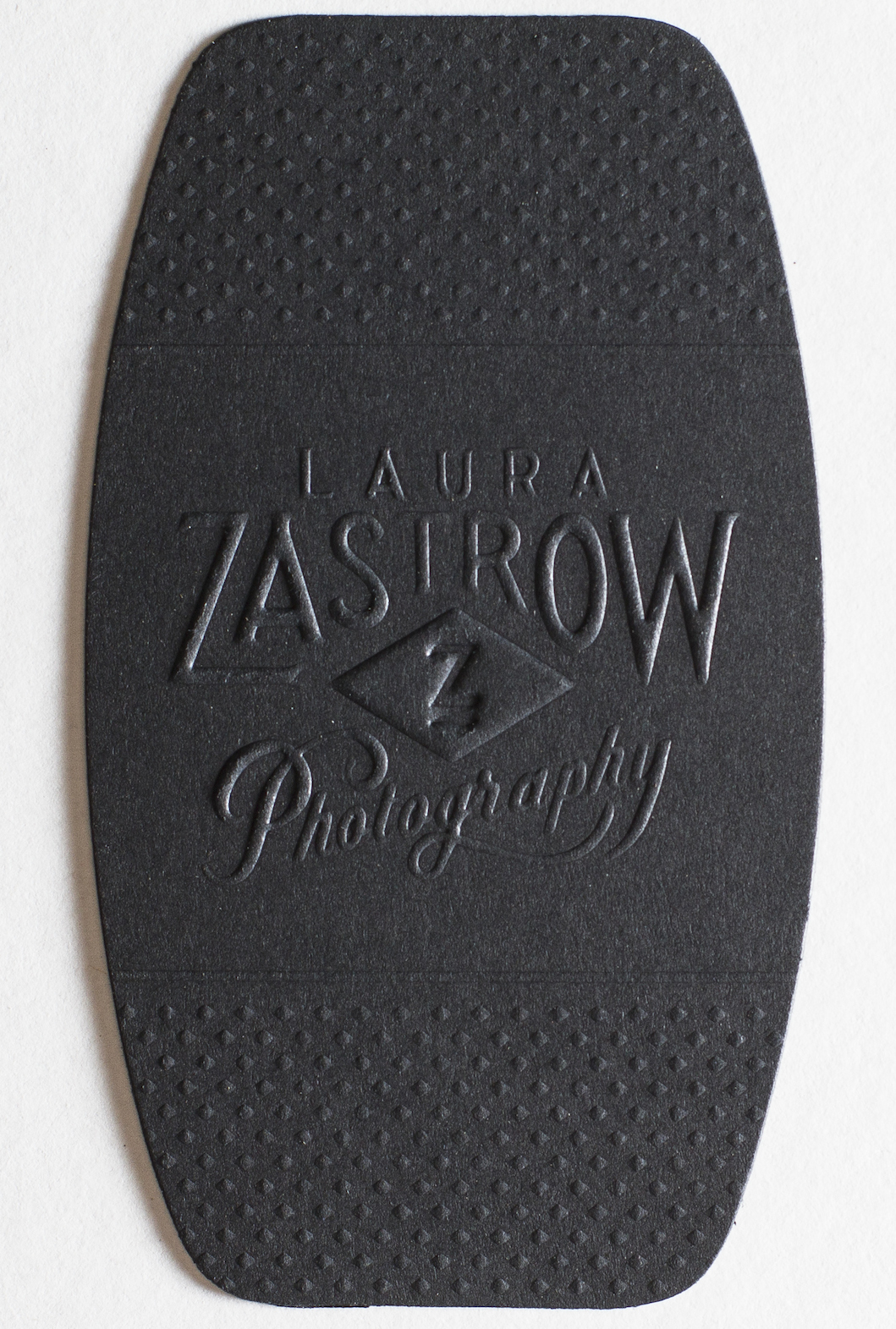
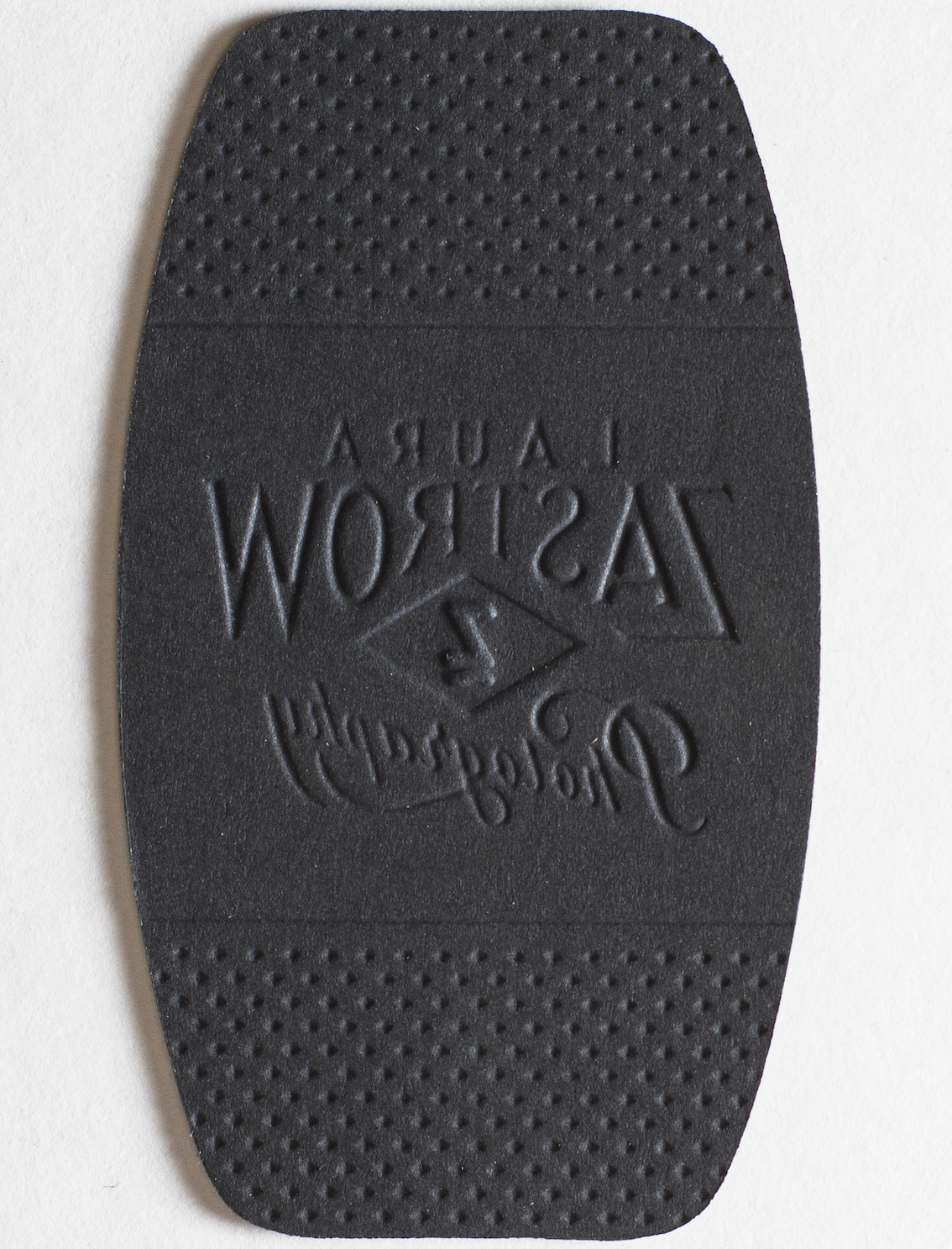
To avoid the back of the stock being affected, you can order a Layered card (2PLY) that will hide the opposite effect of the debossing or embossing inside two cards that are mounted together.
请注意,“盲目的凸版印刷”是一个与众不同t process that is used to create an impression and although it is similar to a deboss, it has a more subtle effect and will not create an emboss on the opposite side. "Show through" with this process will still be visible, but the level will be dependent on the thickness of the card (for example, the "show through" will be less on a thicker/stronger stock).

Whimsical Spot UV Black Business Card
40PT Bright White Cotton
When it comes to adding an unmatched level of elegance to your business cards, few options shine like embossing and debossing.
Jun 5, 2019
•
4 min read
Even though it is a personal preference, we love the natural impression left at the back of an embossed business card. The textured, intricate detail made from the deep impression of the die plates gives both sides of the card an artistic look and a distinct feel.
Sep 3, 2021
•
4 min read